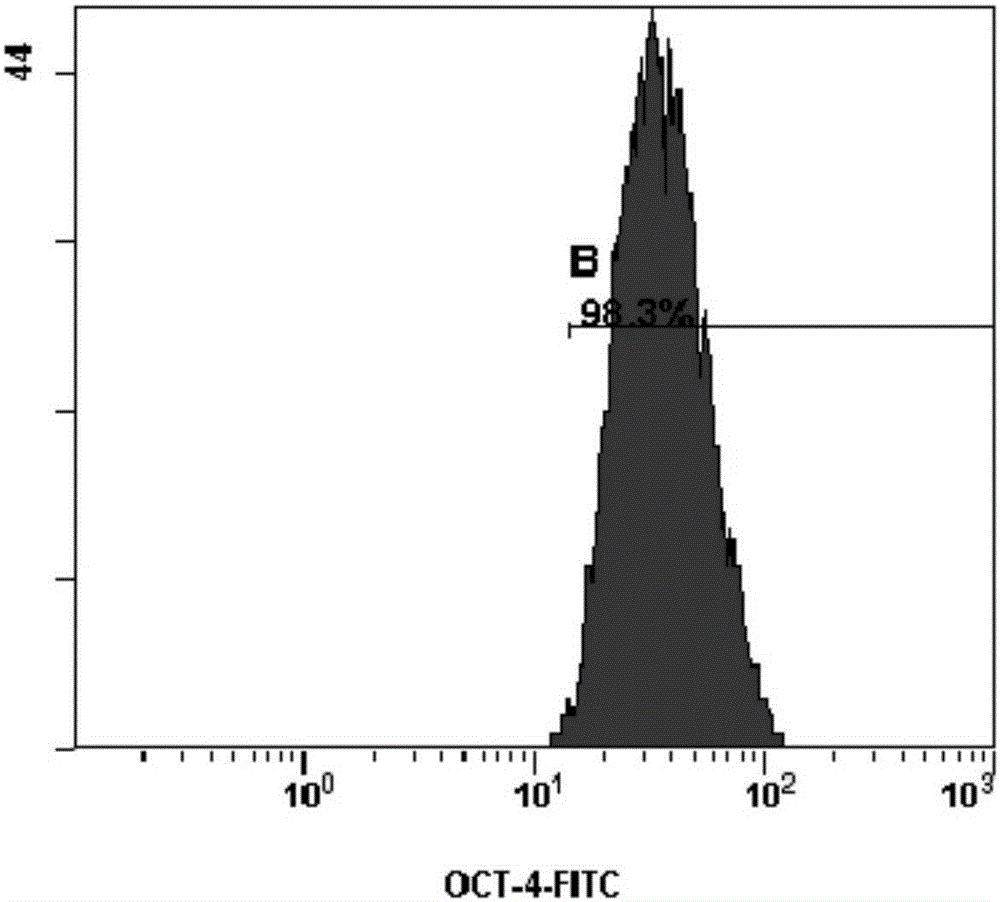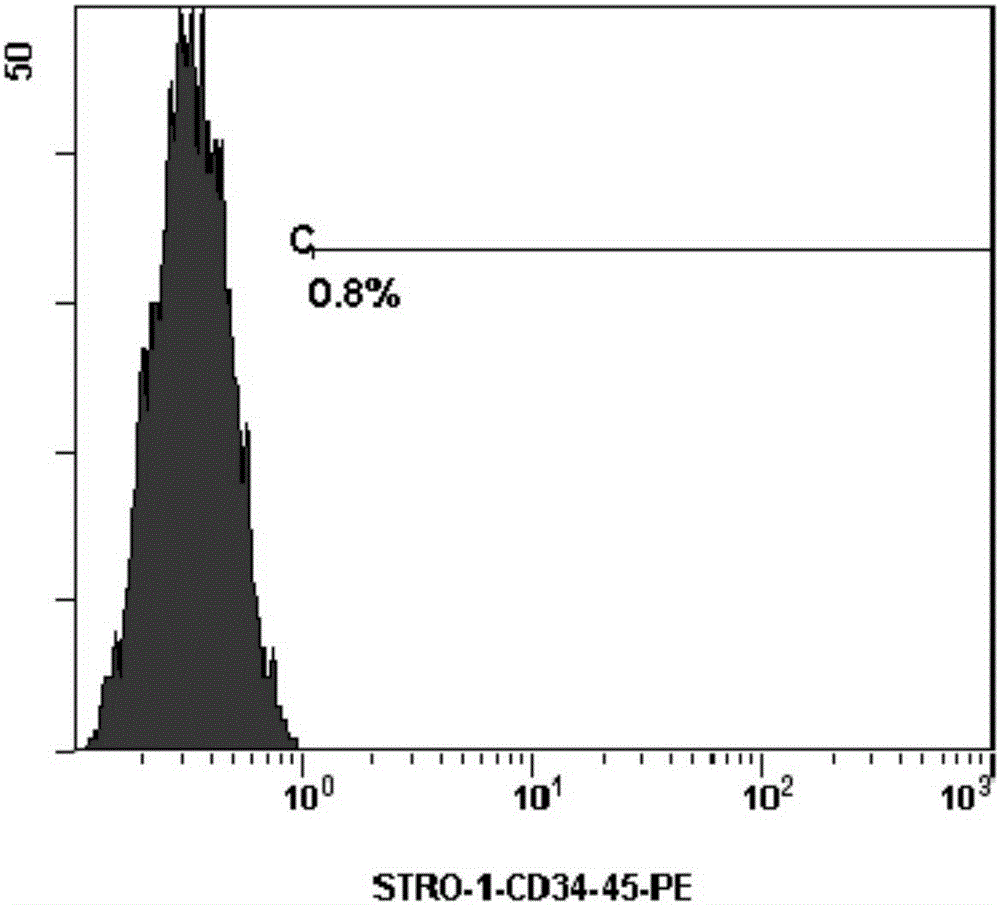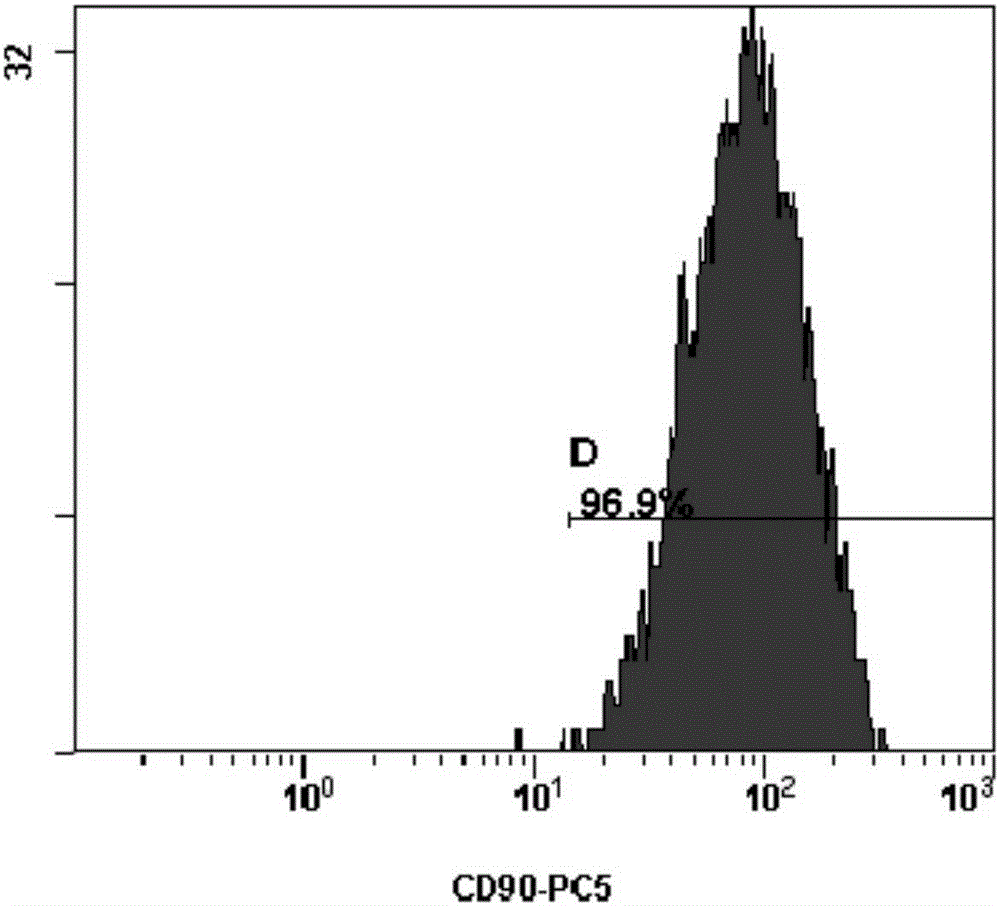Method for extracting sub-totipotent stem cell from chorion of fetal surface of placenta
A technology of subpluripotent stem cells and chorion, which is used in the extraction of subpluripotent stem cells. The field of subpluripotent stem cells can solve the problems of little understanding of stem cells.
- Summary
- Abstract
- Description
- Claims
- Application Information
AI Technical Summary
Problems solved by technology
Method used
Image
Examples
Embodiment 1
[0086] Example 1. Subpotent stem cells were extracted from placental fetal face chorion, detected and amplified
[0087] (1) Take out the human placenta from the collection box and place it in a white porcelain plate, after removing the amniotic membrane and blood stasis, rinse the surface of the placenta repeatedly with physiological saline (sterile, the same below) for disinfection;
[0088] (2) Transfer to a new white porcelain plate, cut the fetal chorion and put it in a 100mm glass dish, try to remove the remaining placental lobular tissue on the surface, and cut it to 0.5-1.5mm 3 Left and right (1mm in this example 3 left and right) small pieces;
[0089] (3) Using a 300-mesh sieve, rinse the small tissue pieces with a large amount of normal saline to remove residual blood cells;
[0090] (4) Tissue digestion: Use 1 to 2 times (1.5 times in this case) tissue volume of mixed enzymes (0.1mg / ml type I collagenase, 0.1mg / ml type II collagenase, 0.1mg / ml hyaluronic acid ...
Embodiment 2
[0098] Example 2. Subpotent stem cells were extracted from the placental fetal face chorion, and detected and amplified
[0099] (1) Take out the human placenta from the collection box and place it in a white porcelain plate, after removing the amniotic membrane and blood stasis, rinse the surface of the placenta repeatedly with physiological saline (sterile, the same below) for disinfection;
[0100] (2) Transfer to a new white porcelain plate, cut the fetal chorion and put it in a 100mm glass dish, try to remove the remaining placental lobular tissue on the surface, and cut it to 0.5mm 3 left and right small pieces;
[0101] (3) Using a 300-mesh sieve, rinse the small tissue pieces with a large amount of normal saline to remove residual blood cells;
[0102] (4) Tissue digestion: Use a mixed enzyme (0.1 mg / ml type I collagenase, 0.1 mg / ml type II collagenase, 0.1 mg / ml hyaluronidase and 0.05 mg / ml neutral enzyme) of 1 tissue volume Protease, which also added 0.01mol / L ci...
Embodiment 3
[0109] Example 3. Subpotent stem cells were extracted from placental fetal face chorion, and detected and amplified
[0110] (1) Take out the human placenta from the collection box and place it in a white porcelain plate, after removing the amniotic membrane and blood stasis, rinse the surface of the placenta repeatedly with physiological saline (sterile, the same below) for disinfection;
[0111] (2) Transfer to a new white porcelain plate, cut the fetal chorion and put it in a 100mm glass dish, try to remove the residual placental lobular tissue on the surface, and cut it to 1.5mm 3 left and right small pieces;
[0112] (3) Using a 300-mesh sieve, rinse the small tissue pieces with a large amount of normal saline to remove residual blood cells;
[0113] (4) Tissue digestion: use 2 times the tissue volume of mixed enzymes (0.1mg / ml type I collagenase, 0.1mg / ml type II collagenase, 0.1mg / ml hyaluronidase and 0.05mg / ml neutral Protease, which also added 0.03mol / L citric aci...
PUM
 Login to View More
Login to View More Abstract
Description
Claims
Application Information
 Login to View More
Login to View More - R&D
- Intellectual Property
- Life Sciences
- Materials
- Tech Scout
- Unparalleled Data Quality
- Higher Quality Content
- 60% Fewer Hallucinations
Browse by: Latest US Patents, China's latest patents, Technical Efficacy Thesaurus, Application Domain, Technology Topic, Popular Technical Reports.
© 2025 PatSnap. All rights reserved.Legal|Privacy policy|Modern Slavery Act Transparency Statement|Sitemap|About US| Contact US: help@patsnap.com



